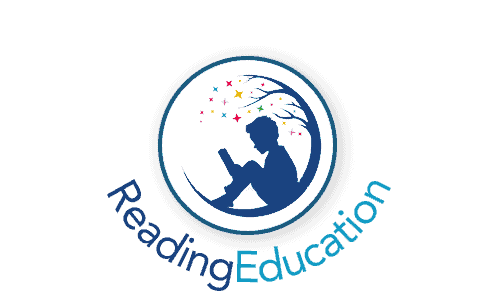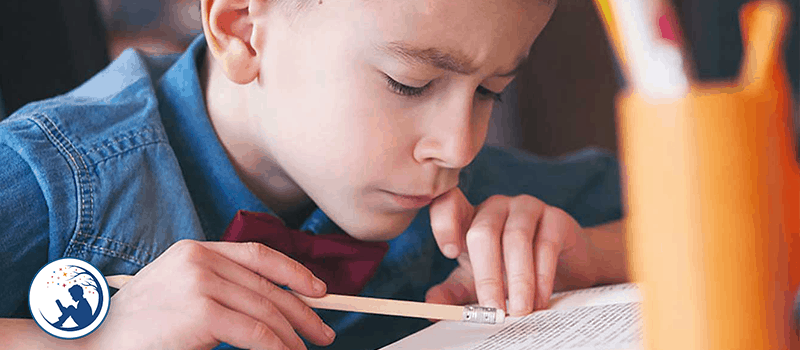Reading is an essential skill; of that, there is no doubt. But what can you do if your child is struggling to read? Is it something you should worry about? At what point should you take action? And what action should you take? There a million and one questions that will go through your head if your little one is having a hard time learning to read – all of which is completely natural. It goes without saying that we, as parents, want the absolute best for our children, so it can be troublesome learning that your child isn’t developing their reading skills at the same rate as their peers.
If you find yourself in this unenviable position, first and foremost, don’t worry – it’ll only exacerbate the situation. As difficult as it may be, it is vital to keep a logical and rational mindset. As parent’s it easy to have a pessimistic mindset as opposed to an optimistic frame of mind, which can often make the situation appear worse than it actually is. Secondly, put a plan in place. If you’re unsure where to start, take a look at our article that details numerous strategies, techniques, and methods to help a struggling reader.
To help put you at ease, we’ve compiled a list of nine things you should know if your child is struggling to read. We suggest reading this article, then heading over to the one linked above and perusing the information contained there; they’re both written to firstly reassure you, and then furnish you with actionable steps you can take to help your child develop their reading skills.
Nine Things You Need To Know About Learning To Read

#1 – Your Child Isn’t Alone
Did you know that one-third of fourth-grade students have reading skills below the “basic” level determined by the NAEP (National Assessment of Educational Progress) reading test? According to the NAEP, “basic” reading level is “Partial mastery of the prerequisite knowledge and skills that are fundamental for proficient work at each grade.”1. It is crucial to understand that it’s not just your child who is struggling. Although it can be very easy to assume the worse, this is rarely the case. Different children develop at different rates; some blossom earlier than others, whereas some blossom later. Patience and continued learning is the key to transforming a struggling reader into a proficient one.
#2 – The ‘Achievement Gap’
A significant proportion of children begin kindergarten performing below their classmates and remain behind as they progress through each grade. Variations in language, exposure to the printed word, and background experiences snowball as students tackle more demanding reading materials.
Research exemplifies a deep-rooted relationship between prior knowledge and reading comprehension skills, i.e. students who have existing knowledge, get it. In contrast, students without existing knowledge, typically fail to do so – something that is apparent from as early as there years of age2. If we delve a little deeper, it becomes apparent that ethnic background also plays a part: 49% of students in poverty; 52% of black students, and 51% of Hispanic students score below “basic” when taking the aforementioned NAEP reading test. It is, therefore, evident that a high percentage of students will require additional teaching to ensure they reach the desirable reading level, which can be achieved through a combination of extra help in school and more reading activities at home.
#3 – Learning To Read Is a Complex Process
Learning to read isn’t easy; in fact, it’s rather hard. Why? Because it requires numerous skills that need to be developed simultaneously. In her 1990 book entitled “Beginning to Read: Thinking and Learning about Print”, Marilyn Jager Adams compares learning to read (and the learning to read “system”) with the process of learning to drive a car3.
However, she points out that learning to read requires even more input and know-how. For example, learning to read requires the reader to “build the car” – learn the complex mechanical systems for word recognition and identification; “maintain the car” – fuel the process with print and reading materials, correct any problems experienced along the journey and ensure everything runs smoothly; and, most importantly of all, “drive the car” – the need to be motivated, strategic, and aware of the journey in hand. The process of building a car is formulaic, which each part being fastened together in a specific order. The same cannot be said about reading. The “reading system” is one that must grow together, from and to one another.
There are no two ways about it; learning to read is a complex and challenging process.
#4 – Sounding Out Words is a Common Problem
Although there are a wide array of reasons why a child may struggle to read, word decoding and recognition are often at the heart of the majority of reading difficulties. Those who struggle to read typically have trouble grasping the notion that letter sounds and the sounds in words are linked to specific letters and patterns of letters, known as the “alphabetic principle”.
According to research, children who struggle to read often don’t grasp the alphabetic principle because they haven’t yet developed the ability of phonemic awareness, i.e. the awareness that words are constructed from phonemes (speech sounds)4. Lack of automatic word recognition results in a lack of fluency, which ultimately adversely affects reading comprehension.
#5 – Pre-School Learning Matters
There is a strong correlation between what preschoolers learn and know before starting school and how easily they pick up new skills, including learning to read, in first grade. The three primary “predicators” of reading achievement that children learn before they begin school are typically stated as:
– Letter recognition, both in terms of knowing the alphabet and knowing the names of each letter.
– A basic understanding of print, i.e. knowing how to turn the pages of a book and which are the front and back covers.
– Phonemic awareness, i.e. being aware of the sounds in words.
Reading to your child helps them to develop the above-mentioned skills; therefore, reading aloud is often cited as the most crucial activity in preparation for learning to read5.
#6 – Learning to Read, Talk, and Listen are Closely Linked
Talking and listening to children is a crucial part of their development and helping them begin to build the skills required to learn to read. For example, when a child says, “Drink”, and their mother says, “Would you like a drink?”, she is helping her child to build a knowledge of the purpose of communication, sentence structure, syntax, and vocabulary – everything required to help foster reading skills in years to come. Another example is singing nursery rhymes and playing words games; this helps children to attain phonemic awareness (the sounds in words). Given there is such an essential link between learning to read, talk, and listen, it is crucial hearing, speech, or language problems are identified early on to ensure the child receives all the help they need to prevent reading difficulties later on in life.
#7 – Struggling Readers Need Help
Most children will learn to read by the end of first grade irrespective of the type of teaching and instruction provided to them. However, those who don’t learn typically aren’t able to catch up on their own.
According to research, over 88% of children who struggle to read by the end of first grade, also have similar difficulties by the end of fourth grade6. Furthermore, 75% of students who are deemed ‘poor’ readers in third grade, will continue to be ‘poor’ readers throughout their time at high school7. This research exemplifies the necessity of furnishing children with a solid foundation for reading from birth all the way through to their first day at school (and beyond).
#8 – Helping Struggling Readers Helps Them To Succeed
Scientific research indicates that for between 85 and 90% of poor readers, prevention through early intervention programs can boost reading ability from poor to average. However, such programs must be provided by adequately-trained teachers and must amalgamate the cores skills of spelling, phonics, reading comprehension, phoneme awareness, and reading fluency strategies and techniques8.
Moreover, research also shows that as many as two-thirds of struggling readers can attain average or above-average reading ability if their disability is discovered early enough and taught approximately from them in.9 10. This research clearly exemplifies the need for highly-trained teachers in every single classroom.
#9 – Teaching Is a Team Effort
Learning to read (and the process of teaching children to read) is exclusive to the classroom; it happens everywhere else too. Teachers, parents, family friends, relatives, and those in the wider community must recognise the critical role they play in helping children develop and learn to read. Evidence shows that what families, teachers, and community programs do makes a huge difference to the development of children; therefore, it’s high time all of those who work closely with children to pool their resources to ensure every single child attains the necessary skills to learn to read. In short, it is a shared responsibility.
Nine Things You Must Know If Your Child Is Struggling To Read: A Summary
Learning to read is a complex process that takes many years to master. While it is true that children develop at different speeds, it is absolutely vital that we as parents, teachers, caregivers, and the community do everything we can to give our children the best start in life and do everything in our power to give our children the tools they require to learn to read – from the day they are born, until the day they’re a highly adept reader.
1. nces.ed.gov. (n.d.). NCES Handbook of Survey Methods – National Assessment of Educational Progress (NAEP). (online) Available at: https://nces.ed.gov/statprog/handbook/naep_keyconcepts.asp
2. Hart, B. and Risley, T.R. (2011). The Early Catastrophe. [online] Available at: https://www.aft.org/sites/default/files/periodicals/TheEarlyCatastrophe.pdf.
3. A.|And, S. (2019). (online) Ed.gov. Available at: https://eric.ed.gov/?id=ED315740
4. Lyon, G.R. and Moats, L.C. (1997). Critical Conceptual and Methodological Considerations in Reading Intervention Research. Journal of Learning Disabilities, 30(6), pp.578–588.
5. A.|And, S. (2019). (online) Ed.gov. Available at: https://eric.ed.gov/?id=ED315740
6. psycnet.apa.org. (n.d.). APA PsycNet. (online) Available at: https://psycnet.apa.org/record/1989-17189-001
7. Shaywitz, S.E., Shaywitz, B.A., Pugh, K.R., Fulbright, R.K., Constable, R.T., Mencl, W.E., Shankweiler, D.P., Liberman, A.M., Skudlarski, P., Fletcher, J.M., Katz, L., Marchione, K.E., Lacadie, C., Gatenby, C. and Gore, J.C. (1998). Functional disruption in the organization of the brain for reading in dyslexia. Proceedings of the National Academy of Sciences, 95(5), pp.2636–2641.
8. Lyon, G.R. and Moats, L.C. (1997). Critical Conceptual and Methodological Considerations in Reading Intervention Research. Journal of Learning Disabilities, 30(6), pp.578–588.
9. Vellutino, F.R., Scanlon, D.M., Sipay, E.R., Small, S.G., Pratt, A., Chen, R. and Denckla, M.B. (1996). Cognitive profiles of difficult-to-remediate and readily remediated poor readers: Early intervention as a vehicle for distinguishing between cognitive and experiential deficits as basic causes of specific reading disability. Journal of Educational Psychology, 88(4), pp.601–638.
10. Blachman, B., Denton, D., Felton, R., Foorman, B., Olson, R., Torgesen, J., Fletcher, J. and Lyon, G. (n.d.). Reading: A Research-Based Approach. [online] Available at: http://arthurreadingworkshop.com/wp-content/uploads/2012/06/10-FletcherLyonResearchBased.pdf.

